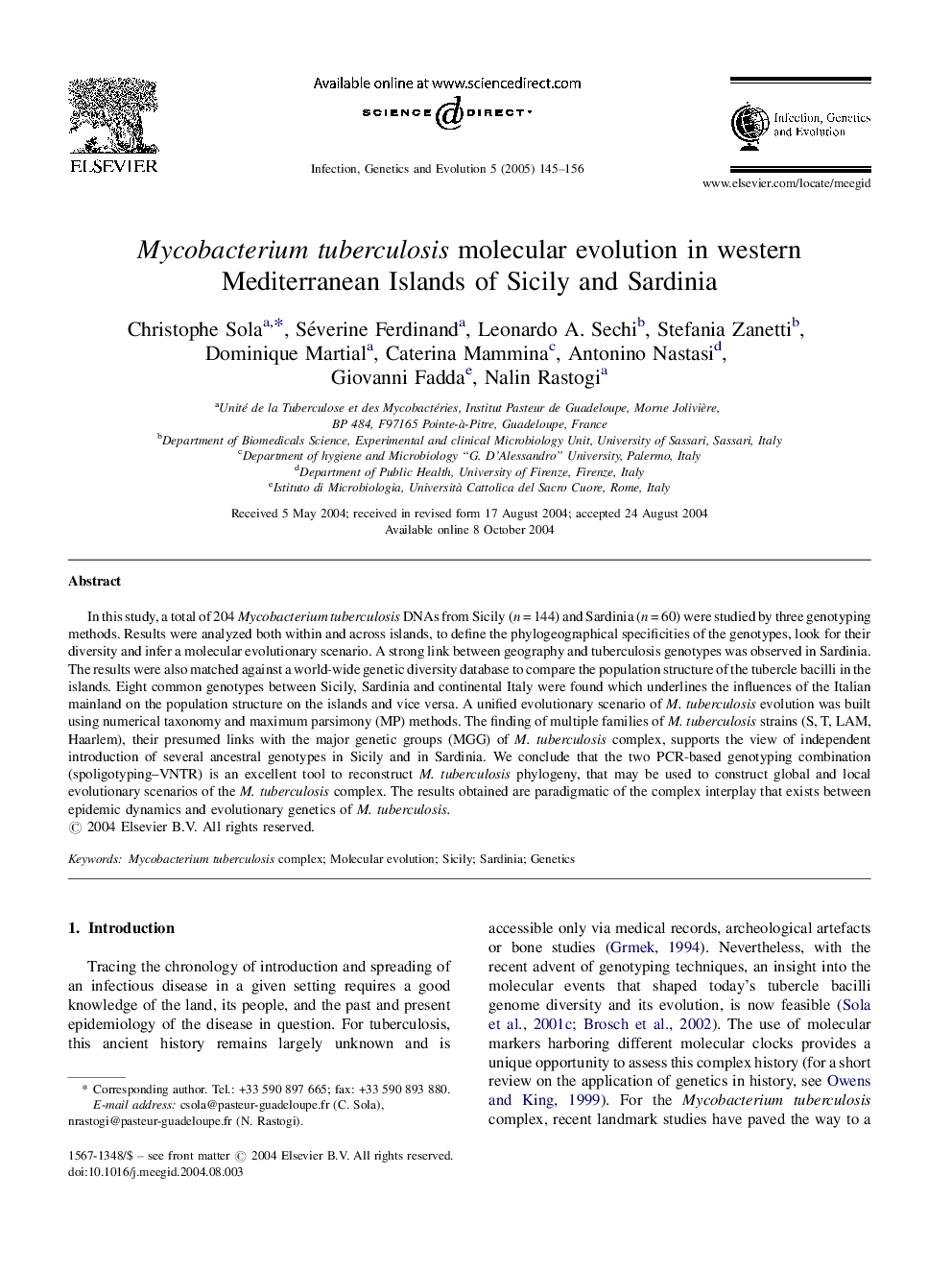| Article ID | Journal | Published Year | Pages | File Type |
|---|---|---|---|---|
| 9133498 | Infection, Genetics and Evolution | 2005 | 12 Pages |
Abstract
In this study, a total of 204 Mycobacterium tuberculosis DNAs from Sicily (n = 144) and Sardinia (n = 60) were studied by three genotyping methods. Results were analyzed both within and across islands, to define the phylogeographical specificities of the genotypes, look for their diversity and infer a molecular evolutionary scenario. A strong link between geography and tuberculosis genotypes was observed in Sardinia. The results were also matched against a world-wide genetic diversity database to compare the population structure of the tubercle bacilli in the islands. Eight common genotypes between Sicily, Sardinia and continental Italy were found which underlines the influences of the Italian mainland on the population structure on the islands and vice versa. A unified evolutionary scenario of M. tuberculosis evolution was built using numerical taxonomy and maximum parsimony (MP) methods. The finding of multiple families of M. tuberculosis strains (S, T, LAM, Haarlem), their presumed links with the major genetic groups (MGG) of M. tuberculosis complex, supports the view of independent introduction of several ancestral genotypes in Sicily and in Sardinia. We conclude that the two PCR-based genotyping combination (spoligotyping-VNTR) is an excellent tool to reconstruct M. tuberculosis phylogeny, that may be used to construct global and local evolutionary scenarios of the M. tuberculosis complex. The results obtained are paradigmatic of the complex interplay that exists between epidemic dynamics and evolutionary genetics of M. tuberculosis.
Related Topics
Life Sciences
Agricultural and Biological Sciences
Ecology, Evolution, Behavior and Systematics
Authors
Christophe Sola, Séverine Ferdinand, Leonardo A. Sechi, Stefania Zanetti, Dominique Martial, Caterina Mammina, Antonino Nastasi, Giovanni Fadda, Nalin Rastogi,
